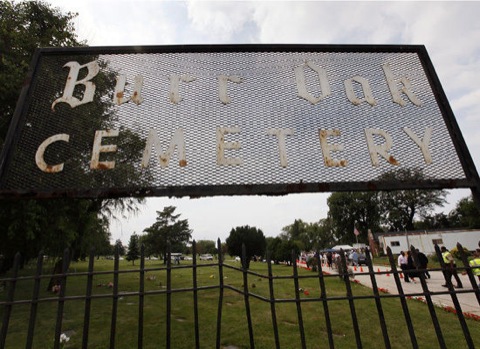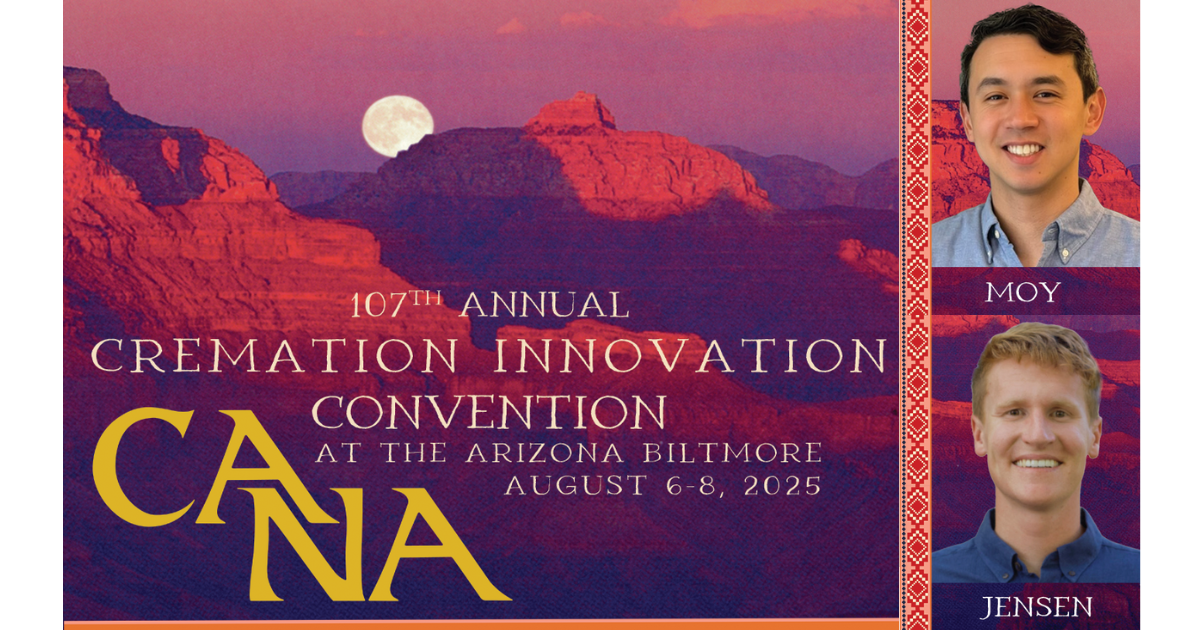Burr Oak Cemetery Scandal Explored In New Documentary Film Project (VIDEO)
In the summer of 2009, three gravediggers and a cemetery manager in Alsip, Ill., 12 miles south of Chicago, were exposed in an elaborate money-grubbing scheme that grabbed national headlines and rattled the area’s African-American community to the core.
The Burr Oak Cemetery, where lynching victim Emmett Till, legendary blues singers Dinah Washington and Willie Dixon and thousands of others were buried, is one of the Chicago area’s most storied black cemeteries. But its legacy was forever tainted with the discovery that four cemetery workers had unearthed more than 200 graves from the front of the cemetery, including Till’s, dumped them in unmarked, mass graves and resold the original plots to new families.
Though the four workers have since been charged in the crimes, and one of them has already begun her prison sentence, the aftershock from the scandal lingers on for many families impacted by the news that their loved ones’ final resting places had been disturbed.
The fallout from the Burr Oak Cemetery scandal is the subject of a new documentary project — titled “Beyond the Divide: the Burr Oak Cemetery Story” — by Chicago-based filmmaker Naomi Kothbauer. Together with community organizer Edward Boone, Kothbauer hopes to use the story of the cemetery as a means to open up a dialogue about cultural preservation: why it’s important, and what’s at stake for our families, our communities and ourselves if it’s not respected.
To help support getting “Beyond the Divide” off the ground, Kothbauer has launched an IndieGoGo fundraising campaign and is accepting contributions through Feb. 16.
The Huffington Post recently spoke with Kothbauer about her film.
HP: What initially inspired you to delve into the Burr Oak Cemetery controversy as the subject of a documentary film?
NK: I was actually approached by Ed Boone because we had a mutual friend who introduced us. I had remembered hearing about the cemetery in 2009, because my roommate at the time had family that was buried there. I remember it being big news and I guess I’m just really particularly interested in making films about the relationship between history, the present day and the future. I feel like we can learn a lot about ourselves today when we look to the past and what has happened before. It’s kind of my shtick. When I met Ed, things went forward pretty naturally. I thought it’d be a good issue to look into because, though a few years had passed, the repercussions of it are still being felt.
What was your initial reaction to the news of foul play at the cemetery?
When it first came out, I think my strongest reaction was the fact that Emmett Till’s grave had been tampered with. I remembered so clearly reading and hearing about Emmett’s story in history classes back in high school that I felt like, wow. For someone who was so instrumental to the civil rights movement to have their remains be desecrated in that way was really shocking.
I had been to a few funerals before but had never had a personal, deep tie with any particular cemetery. But Burr Oak is such a cornerstone of history and tradition in the African-American community in Chicago that it really surprised me that this could happen. Since it happened, there has been a lot of litigation and class action lawsuits — and eventually even some laws could be changed to make things more strict for cemeteries. Families are also still struggling with this and some people didn’t receive any sort of settlement and are dealing with the emotional impact. It feels like these people are being disregarded.
Right, and the nature of the news cycle means that this story is a few years old and that much of the initial “shock” has worn off while the controversy’s impact on many families and communities remains highly potent.
The thing is that similar things could be happening in cemeteries all over, impacting both historical figures and regular folks alike. It’s got me thinking about what the role of a cemetery is. It serves the role of simply burying people there, but how is it a testament to history and perseverance and how do we honor that? How do we make sure things kind of thing doesn’t happen again? Even though the scandal has sort of fallen out of the news and isn’t one of those “shock stories,” per se, anymore, it still carries a different kind of weight. There have been a lot of interesting things that have happened since the initial investigation began.
Tell me more about working with and talking to Ed for this project. What has that been like for you?
The first time I met him I was kind of blown away by the amount of materials and contacts he had. It’s every filmmaker’s dream to meet that kind of a person who can point you toward more research materials and interview subjects and he’s been really active in the cemetery for a long time and had been suspicious of it for a while. His parents and a few other relatives are buried there.
Before the scandal broke out, he would go there and protest the cemetery because he suspected there was some kind of problem with sewage or drainage, so he would hold up signs that said “Our loved ones should rest in peace, not in water” on peak days like Labor Day or Mother’s Day. He met a lot of people there through that process and he also works as a community organizer, so he has all that down. He has made things pretty easy so far, and his personal story is really compelling.
I understand you previously completed a documentary on Chicago’s Back of the Yards neighborhood. Have you noticed certain themes or ideas carrying over from that film into this one?
Definitely the idea of the relationship between the current day and history. In so many ways, history tends to repeat itself and, maybe if people paid more attention or honored the contributions of those who came before, some things wouldn’t happen again. In the Back of the Yards film, I looked into the role of the immigrant community in Chicago. From the first time the Back of the Yards existed, it was Polish people, German people, Irish people — all of them there to find work — and today it’s largely a Mexican community. So it was interesting how the community changed but, in a way, stayed the same.
That is also kind of the case for the Burr Oak Cemetery. There are a lot of people buried there, especially if they are older, that had to go through a lot of disrespect in their lifetimes, dealing with the inequalities of segregation. And yet you still see this kind of mistreatment of the African-American community in the area in regard especially, in my opinion, to how the litigation has been handled. Many of the settlements have not been very much and it represents a repetition of disrespect. At the same time, people continuously, throughout generations have carried on family traditions, honored the past and looked to a more optimistic future.
What have been some of the biggest surprises you’ve encountered thus far along the process of creating this film?
The film is in the very early stages of production, but it’s been really interesting on the research end already to learn about the rich history the cemetery has. A lot of famous musicians, athletes and people from a wide variety of backgrounds were buried there and pay tribute to people in that cemetery. I came across a story recently of a man who creates grave markers for former Negro League baseball players because baseball had such an impact on him. The stereotype is that a cemetery is a quiet place where you go to bury someone and you’re maybe back once a year, but there is actually a lot of interaction going on and people trying to commemorate history and show their appreciation of it.
Finally, it looks like your IndieGoGo campaign is off to a really solid start. Are you confident you’ll get to your goal?
I’m pretty optimistic we’ll meet our goal. I think this is going to be an important film because, apart from the educational component, we’re really trying to, in a way, memorialize the people who were dug up and the families who had loved ones buried there and don’t know where they are. We’re trying to honor their memory because, even if family members don’t end up getting settlements, they can rest assured that this project is going to get into issues and try to honor those people, both well known like Emmett, as well as people who aren’t in the history books but made important contributions in their time as well.
As of Jan. 6, with over a month to go, the “Beyond The Divide: the Burr Oak Cemetery Story” film’s IndieGoGo campaign has raised over $1,800 of their $7,000 fundraising goal via their IndieGoGo campaign. Click here to learn more and help the film come into fruition.




